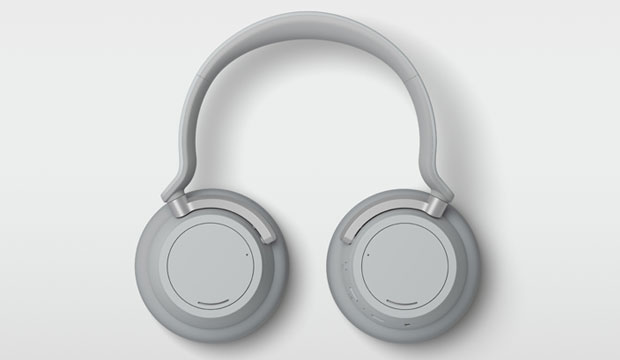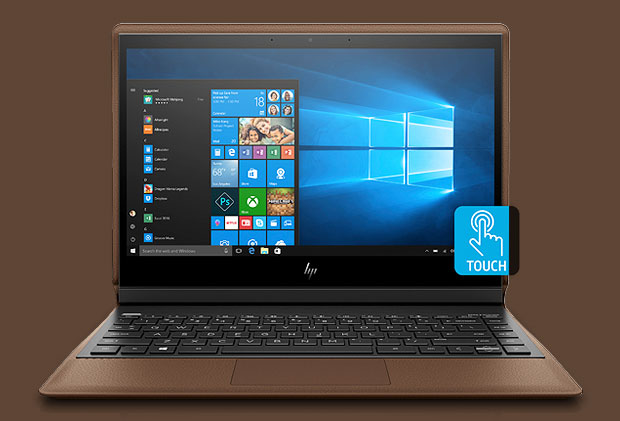There were two interesting product launches last week. HP delivered what is pretty much a clean slate rethinking of the 2-in-1 PC with the HP Folio, and Microsoft unveiled a refresh of its Surface Line.
Both firms made a big deal of the fact that their products were much better than their Apple counterparts -- but Apple has been treating PCs like a drunk uncle for some time now.
Basically, I think the folks at Apple are embarrassed they still make PCs, which is both sad and ironic, since Apple basically launched the PC revolution. No one told HP and Microsoft, though, and both effectively have been racing to see which could build the best alternative to what Apple would be making if Apple cared.
This has resulted in some rather impressive-looking products. I say "looking" because Apple is a form-over-function company. For Apple, and for the products I'll be talking about, appearance leads, with the focus being more on status, beauty and -- to a certain extent, convenience -- over speed. I personally think this is great competition because it has resulted in a level of innovation we haven't seen, and that is needed, in the segment.
I'll share some observations on that and then close with my product of the week: a new set of headphones in the Surface line that have the most powerful active noise cancellation I've yet experienced.
HP Folio
The HP Folio (pictured above) is what I'd call a true out-of-the-box-thinking product. It reimagines the 2-in-1, which was Intel's effort to address the iPad threat.
The issue with 2-in-1s has been that most folks used them as laptops and never as tablets, because they were big, heavy, and felt awkward as tablets.
People commonly have used large portfolios -- but they aren't made of steel or aluminum. They generally are leather, often brown leather, and they just feel better in the hand. Thus, the HP Folio is covered in leather -- brown or burgundy. For its size, it is surprisingly light. It has all-day battery life, and it has one more really interesting feature: a cantilevered screen.
This feature allows the screen to fold down, covering the keyboard and turning the product into a tablet. Also, you can move the bottom of the display forward, turning it into a decent movie watching device for airplanes, particularly those that have shallow seat tables.
This is the way we should be approaching design problems. Much like it makes no sense for a car company to build a convertible with a top no one will lower, it makes no sense to design a 2-in-1 that folks will use only as a laptop. If they aren't using it in the tablet form, there is a reason, and at least part of the reason is that when held as a tablet, most 2-in-1s suck.
If you think about it, we often wrap our phones and actual tablets with cases to make them more robust and easier to hold. So, rather then spend a ton of money on metals, why not create a product with a built-on case, and make it both an attractive and a complete product, rather than something the user has to assemble?
I look at the folio and wonder if it isn't the template for how we should be building phones, tablets, and especially 2-in-1s. Rather than attempting to copy Apple, HP built what Apple's designers likely should have thought of themselves.
Surface Refresh
The original Surface was a tablet that seemed to embrace the Apple iPad design but run Windows rather than iOS. It sold reasonably well, but it was more of a PC in tablet clothing than a true tablet. Battery life wasn't great, it really wasn't as attractive, tablet apps were light, and the related Intel technology wasn't ready.
Microsoft tried ARM, but it couldn't run Windows well and that effort outright failed. One thing that was particularly interesting was the use of a unique magnetic connector for power, something that Apple once was known for but had walked away from in its mobile products. It's a safer approach, because if you trip over your power cord it easily disconnects and doesn't send your laptop/tablet flying to the floor. (When first MacBook took a fall, the hinges on the lid shattered.)
However, time passed, Intel improved its technology, and the combination increasingly began to turn out more compelling products. The products in thislatest line, particularly the Surface Notebook and Surface Book, are more MacBook competitors than they are iPad competitors, but they arguably look and work better than the Macs or iPad Pros as notebook computers.
The two most interesting products likely are the Surface Go and the Surface Studio (even though my personal favorite is the Surface Notebook, which now comes in a gorgeous black). The Surface Go recently was updated with built-in LTE (WAN wireless) and a USB-C charger. That makes it really the only true tablet-first Surface. The WAN connectivity makes it similar to an iPhone, with regard to data use, in that you don't need a WiFi signal for it to work.
The Surface Studio is perhaps the most interesting in that it takes on the iMac. Although it arguably is underpowered for a workstation, it arguably gets nearly unlimited performance when connected to the new Windows Virtual Desktop. This means you could have an all-in-one with a more updated design than the iMac and more performance than any localized workstation. That's a perfect storm, boys and girls, and that's very interesting.
Wrapping Up: Who Builds the Best Apple PC Alternative?
Honestly, I don't think this is even an interesting question anymore, because Apple seemingly doesn't care about this race. Still, with HP and Microsoft both focused on beating what Apple could have made, but chose not to, we are getting some amazingly innovative products in the market.
These products don't try to make the unholy Frankenstein blend of laptop and tablet falsely real, they actually try to create something different -- something that actually could do both. The line still lacks key apps, but another new Microsoft product, this one free, eventually could address that.
The Your Phone app basically puts your Android phone on your desktop and gives you access to the phone. (Eventually you may be able to run all your android apps on your PC this way, but initially it is messages and photos.)
I continue to think that the decline in PC sales occurred because the firms really didn't want to invest in the platform. Well, that's changing. Innovation is back, and some amazing products once again are coming to market. I think that is a great thing -- it is just a shame that Apple has refused to join the PC innovation party.
Noise-canceling headphones are generally a disappointment. The promise is you hit a switch and all the annoying noise goes away, but the reality is that it just gets quieter. Those annoying crying, talking, whining, and parts-falling-off sounds that keep me from sleeping on planes are still there, making it hard to sleep or even to concentrate.
With the advent of open plan offices, the poor fools who have to work in areas that used to have cubicles now have a view -- but they also have a ton more noise.
Well, I've just gotten noise-canceling religion, and I'm now preaching about silent airplane flights and cubicles. You see, I put on these new Microsoft Surface headphones, cranked up the noise canceling to eleven, and the world actually got quiet.

Surface Headphones
This isn't just inbound, but it does a pretty decent job (though not perfect) of quieting the noise that surrounds you when you try to make a call using the headphones. These things are so good they are almost unbelievably good.
They're not a cheap date at around US$350, but how much is your sanity worth? When I put them on, I'm pretty sure I could hear angels singing. Well, maybe it was the first time I could hear myself think. The Microsoft Surface headphones are amazing, and they are a natural for my product of the week.






No comments:
Post a Comment